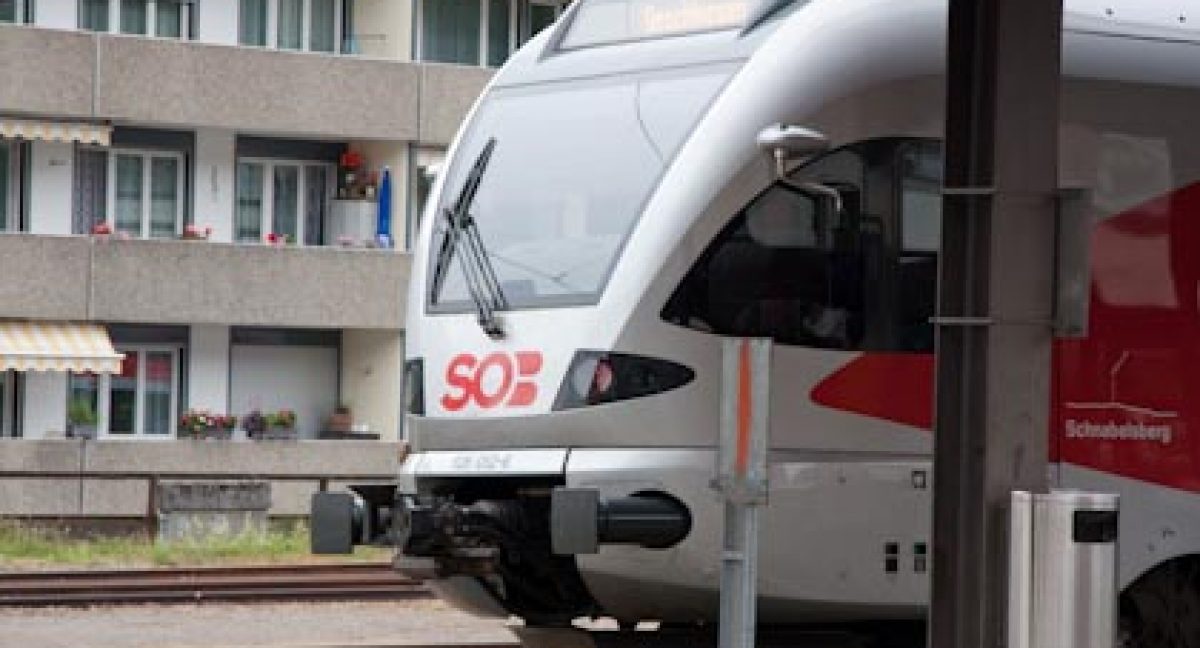By: Melvyn Crabb
Forestdale, where I live, is a 1970s out-of-town housing development on the edge of south London, about 17 miles (27km) from the centre of the UK’s capital. Every year the Forestdale Residents’ Association holds a Family Fun Day at the end of August, and this time I was asked to produce a model railway layout for use by the local children attending the event.
I had a spare baseboard measuring 51×30 inches (1295x762mm) from an old stillborn N gauge layout. Could this form the basis of a viable H0 scale layout? A little playing around with some spare Marklin M track, plus a good deal of inspiration from the layouts one sees in glass cases in some German railway stations, showed that it would be possible, though it meant tight curves – down to 11 inches/286mm in a couple of places – and small locomotives and wagons. Well, tight curves could be hidden by scenery, and small locos and wagons are ideal for small hands to use, so I was in business!
As the layout would be operated by small children (under adult supervision), it was essential that it should have lots of play value. The track plan eventually settled itself into an oval with passing loop, with sidings branching to left and right from the inner loop, for the station and goods yard respectively. No exquisitely modeled Bavarian branch line here, rather an oval to enable trains to whizz round at top speed, until the dizzy passengers were delivered to the station, or wagons arrived at the goods siding for shunting and loading or unloading. Perhaps there should be something else to capture the imagination – how about a working level crossing? Controls could be arranged so that one child could drive the train, while another operated the remote-controlled turnouts; could the layout give a third junior operator something to do? Of course – the old Marklin 7051 tinplate remote-controlled crane could load and unload wagons by means of its electromagnet; as for wagon loads, how about some spare pressed tinplate sleepers (ties) from an old 1950s Hornby 0 gauge train set – don’t they look just like steel girders?
The layout itself was built over the course of a few evenings, including construction of some buildings. The station, goods shed and signal box are 1970s Hornby – simply because I happened to have them available – while the village is a mixture of Pola and Vollmer structures; the human and animal population is by Hornby (since a 00 scale cow just looks like an H0 one that’s been well fed).
(Click to enlarge)
The layout proved to be very popular indeed, especially with the small children – under about 10 years old or so – which was exactly its target market. Above, the latest recruits show the chairman of the Forestdale Residents’ Association how to run a railway
A few lessons were learned very quickly:
Children are very quick to learn how to operate the controls of the layout, and are keen to demonstrate that knowledge to their peers; it saves you the job of teaching each new driver or signalman!
Expect things to get handled – sometime unintentionally roughly – so don’t run your prized super-detail locos and wagons on the layout.
As the exhibitor you are there to guide, not to preach; so if the train drivers of the future want to run the passenger coach at the end of the goods train, let them – they are supposed to be having fun.
The setting of turnouts was not always observed as carefully as it should be, which led to the occasional derailment – all part of the fun! – but for next year, the layout will be equipped with signals linked to turnouts and which also control track current; so a train will not be able to run through a red light and come to grief.
Children have an innate sense of fair play, but always be prepared to act as referee to ensure that everyone gets their turn at playing with the trains.
Children – and their parents – are fascinated by model railways!
What next? Well, the layout was certainly fun to build and operate, and it’s now permanently erected at home for use as a test track. Perhaps the farm might be turned into a housing estate in the way that Forestdale was created – Hornby’s kits of modern suburban houses are identical to the local ones. Maybe that gives a name for the layout: die Waldtalbahn – the Forestdale Railway?
©2011 ETE Eastern New England Chapter. All rights reserved.


![Forum layout2010_points[1]](https://i0.wp.com/www.ete-ene.org/wp-content/uploads/2016/05/Forum-layout2010_points1.jpg?resize=150%2C150)
![Forum layout2010_watching[1]](https://i0.wp.com/www.ete-ene.org/wp-content/uploads/2016/05/Forum-layout2010_watching1.jpg?resize=150%2C150)